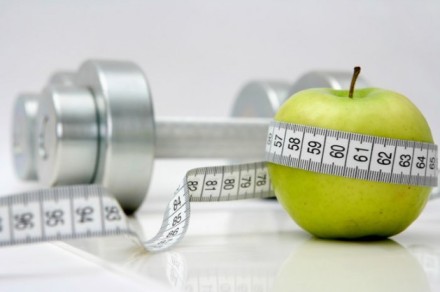You can do Crunches, Side Bends, Russian Twists and other abdominal exercises all you want and still not lose belly fat. Why? Because you’ve fallen prey to the myth called “spot reducing.”
“Spot reducing” is the mistaken notion that you can perform an exercise specifically targeting one muscle group, such as the abs, and reduce body fat in that area. Target exercises can strengthen a muscle, and they may offer additional tone, but they will not eliminate fat in that specific spot. In actuality, fat burns off in reverse order from how it went on. So, if your stomach was the first area that gained extra fat, it will be the last place to lose it.
Banish the myth and use the following guidelines to achieve a slimmer waistline and reduce your body fat. The result will be improved sports performance, appearance, confidence and overall health.
Strength Training
Perform a full-body strength training workout three times a week on non-consecutive days. Strength training burns calories while you’re working out, but your body continues to use up fuel even after the session. Plus, as you build muscle mass, your body will use more calories throughout the day, burning even more fat.
In your strength training sessions, focus on multi-joint exercises, like Deadlifts, Squats, Lunges, Push-Ups, Inverted Rows and Pull-Ups. Incorporate bouts of high-intensity interval training at the end of your workouts. Try a Tabata routine by sprinting, or performing any other intense exercise, for 20 seconds, resting for 10 seconds, and repeating eight times.
Use Combos
During strength training sessions, perform three multi-joint exercises in succession to rev up your heart rate and metabolism. A good example: Squat, Overhead Press and Upright Row. Do not rest between exercises, but take a minute or two between sets. Perform five sets of each combo. Try to perform two to four combos each workout.
Build Endurance
After performing an upper-body exercise, immediately perform Sprints, Mountain Climbers or Burpees. This will increase your heart rate and metabolism, thus burning fat. Try this sequence:
- 10 Push-Ups
- Rest 10 seconds
- Sprint 40 yards
- Rest 10 seconds
- 10 Pull-Ups
- Rest 10 seconds
- 10 Burpees
- Rest 10 seconds
- 10 Bench Dips
- 45 seconds of Mountain Climbers
Contract Abs
Contract your abs several times a day while standing or sitting. This keeps the muscles engaged and improves posture, making it appear that you have less belly fat. Contract your abs for five seconds. Relax and repeat 10 times.
Meal Frequency
Eat a small meal every two to three hours, five or six meals per day. This regulates your blood sugar, keeps your metabolism active and limits overeating, since you won’t feel as hungry as you would with longer intervals between meals. Frequent small meals enable the body to use all your nutrients as fuel, rather than storing them for later.
Sleep
Sleep between eight and nine hours per night to promote the distribution of human growth hormone (HGH). This fat-burning hormone increases the effectiveness of your workouts and is essential for building muscle. In fact, studies show that sleeping for only five to seven hours contributes to belly fat, impedes workout recovery and can lead to muscle breakdown.
Photo: healthyoates.com
Jim Carpentier is a certified strength and conditioning specialist, a New Jersey-licensed massage therapist and a health/fitness writer. He currently serves as associate health and wellness director at the Greater Morristown YMCA in Cedar Knolls, N.J.
Source: http://www.stack.com/2012/05/10/simple-ways-to-lose-belly-fat/


